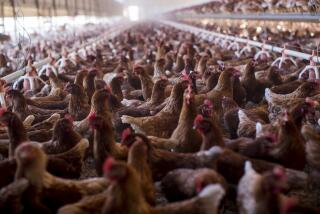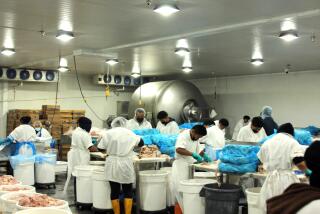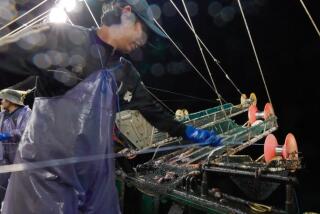Toward Cleaner Beef?
- Share via
I wish to comment on the article “Does Streamlined Beef Inspection Work?” (June 18). The Streamlined Inspection System (SIS) is supposed to modernize beef slaughter plant inspection, but in reality it’s (designed) to deregulate the beef industry so it may be more competitive with the poultry industry, which was deregulated 35 years ago.
Until now the meat industry has followed the 3,000-year-old kosher law of separating the “unclean” from the “clean” while the poultry industry has never followed such sanitary processing procedures. Unlike beef, fecally contaminated chickens are separated from the “clean” (chickens) on the line and trimmed, then placed back on the line to be (mixed again) with the “clean” (chickens) in “fecal soup” tanks where the health hazard of salmonella food poisoning organisms is absorbed.
The SIS program is designed to permit contaminated beef to move as fast as poultry. If fecally contaminated beef is not removed from the line, it will be washed until it appears clean, as contaminated chickens have been. Instead of a (food safety) program, this is a cosmetic program because it has been scientifically proven salmonella food poisoning organisms cannot be washed off raw meat or poultry, no matter how much it is washed.
It is the media’s fault the public does not know. Congress should pass laws that require the Secretary of Agriculture to withhold “USDA Inspected” labels from processors who do not modernize plants and separate the “unclean” from “clean.” Former USDA Secretary Yeutter on July 3, 1990 told Congress it would be too “expensive” and “archaic” to remove fecally contaminated chickens from the processing line.
Now, USDA wants approval to irradiate fecally filthy chickens. Will consumers be patriotic and eat irradiated chicken feces to help the economy?
DR. CARL L. TELLEEN
Jefferson, Iowa
More to Read
Sign up for Essential California
The most important California stories and recommendations in your inbox every morning.
You may occasionally receive promotional content from the Los Angeles Times.










